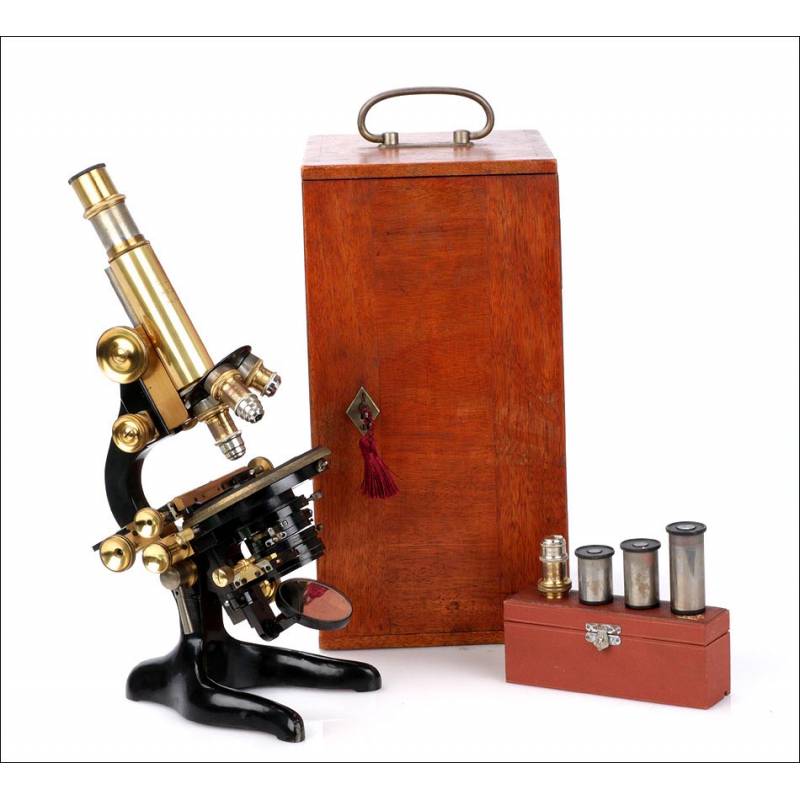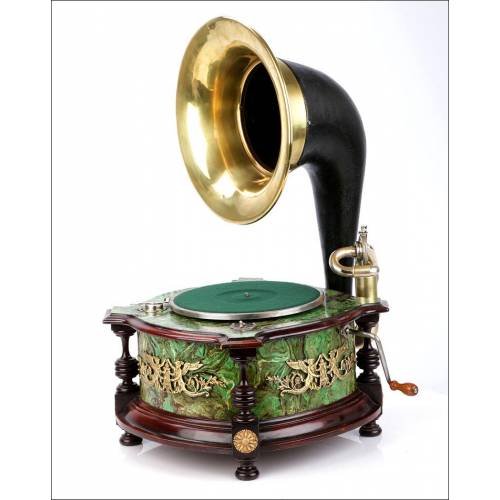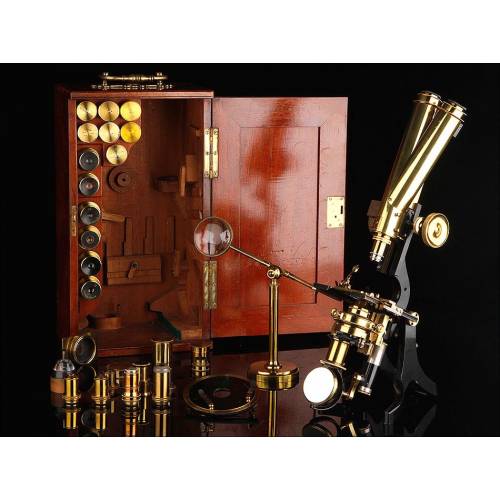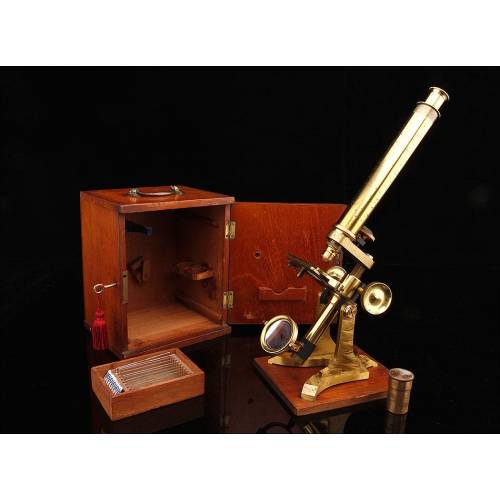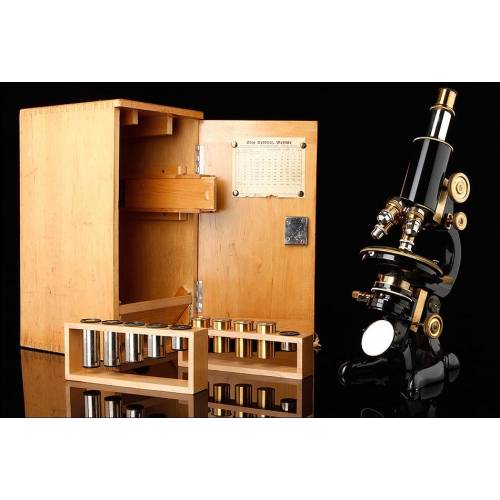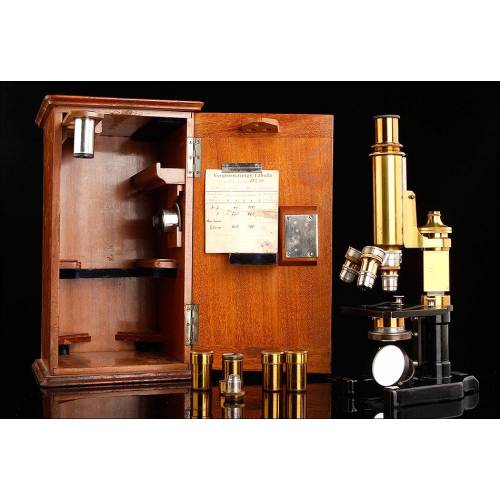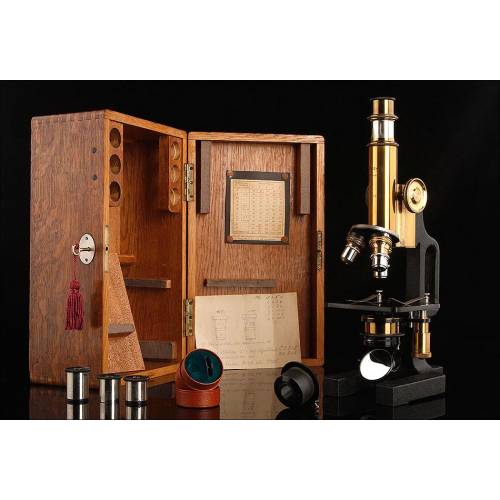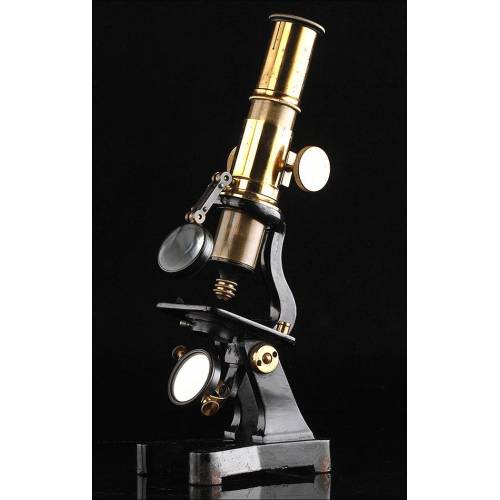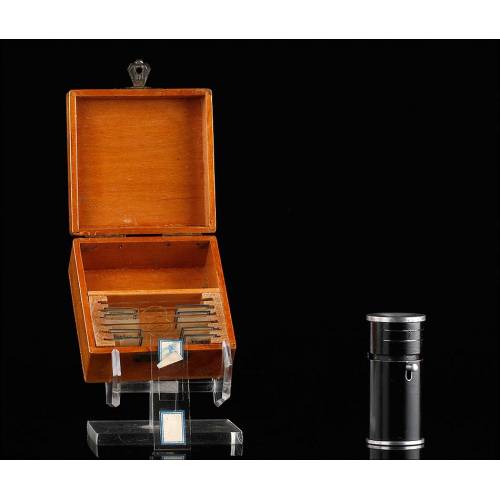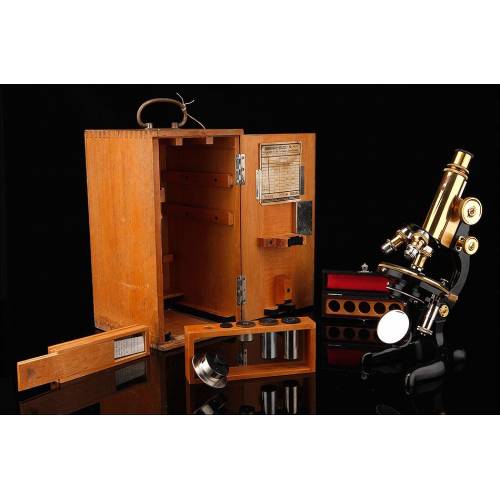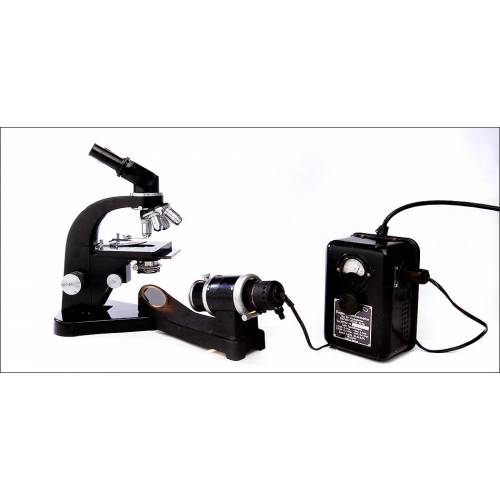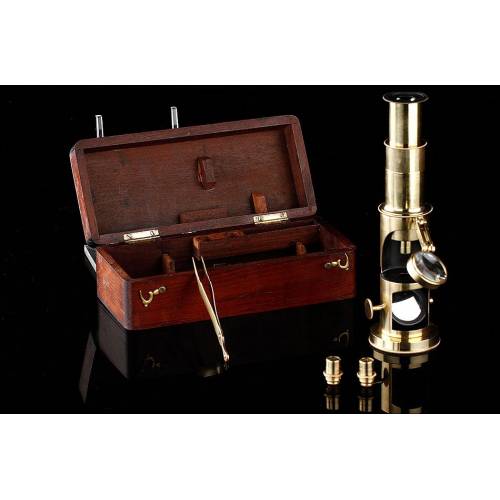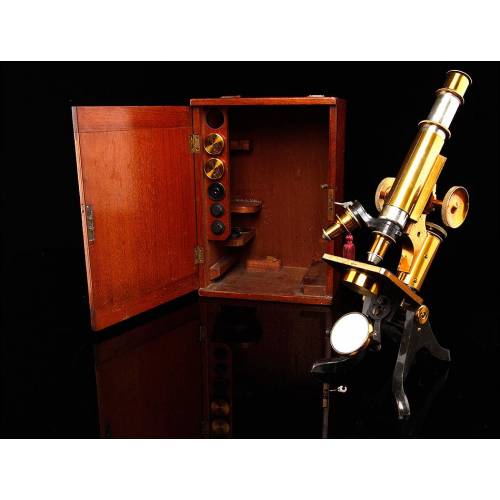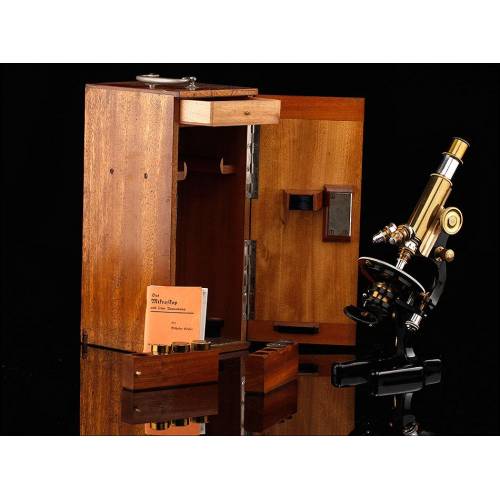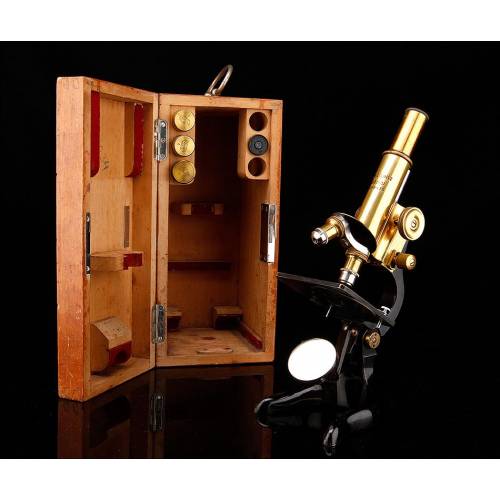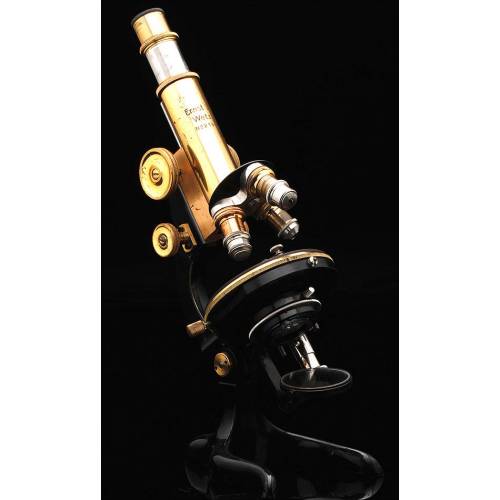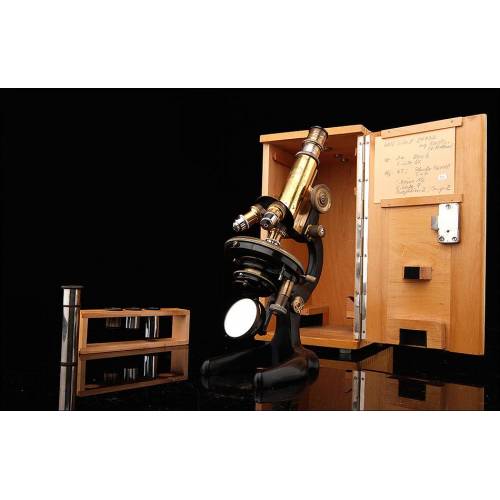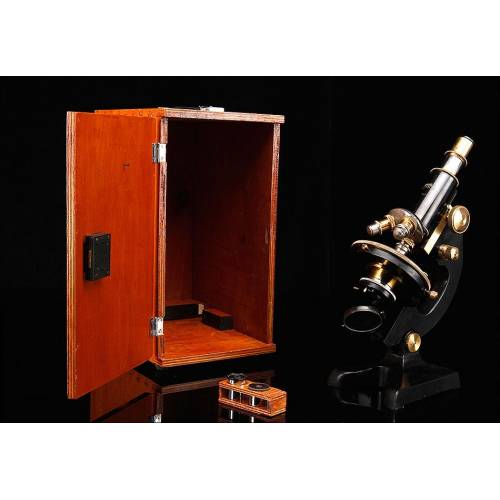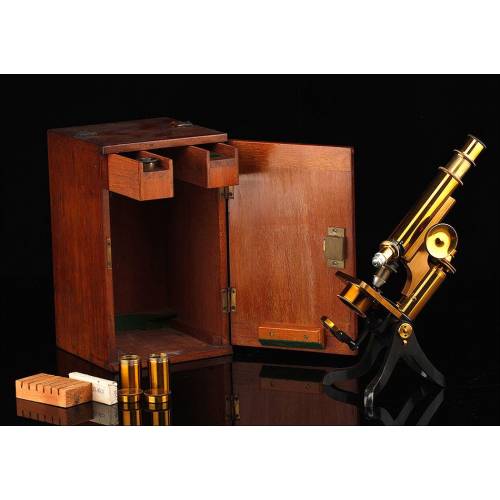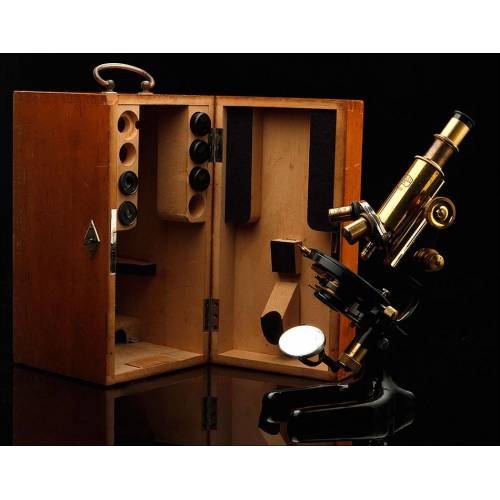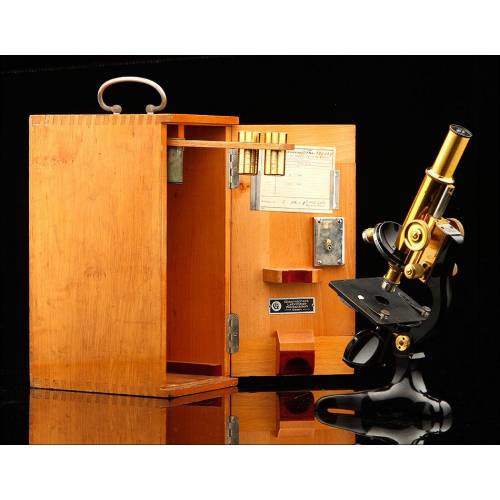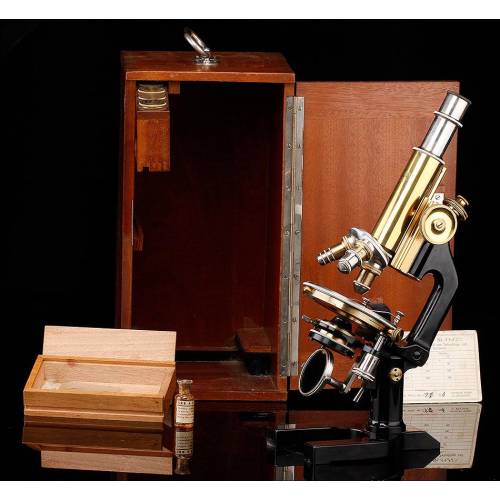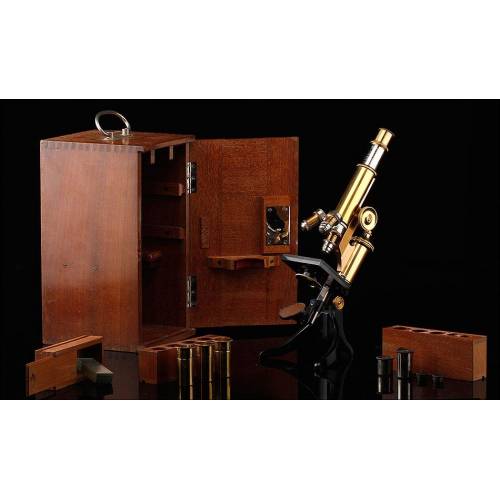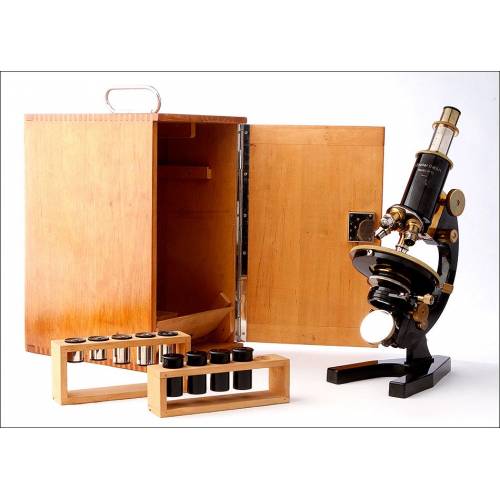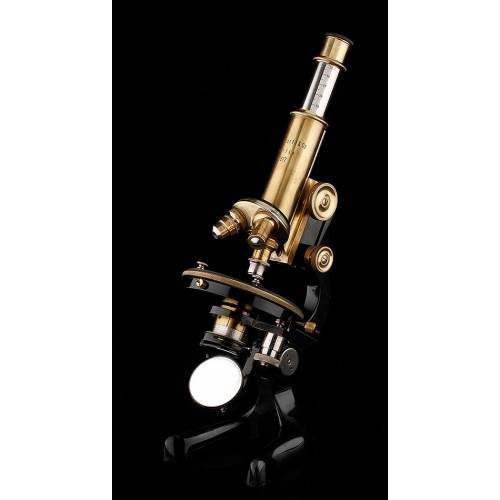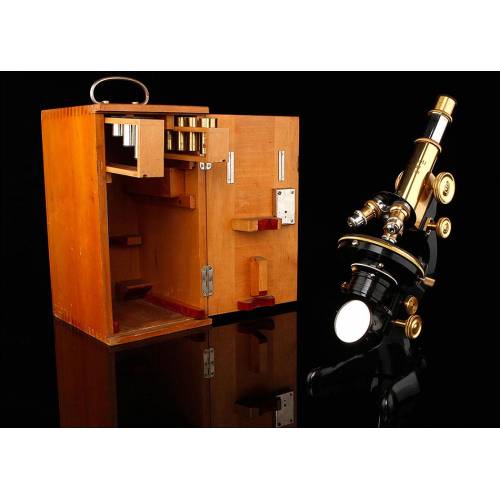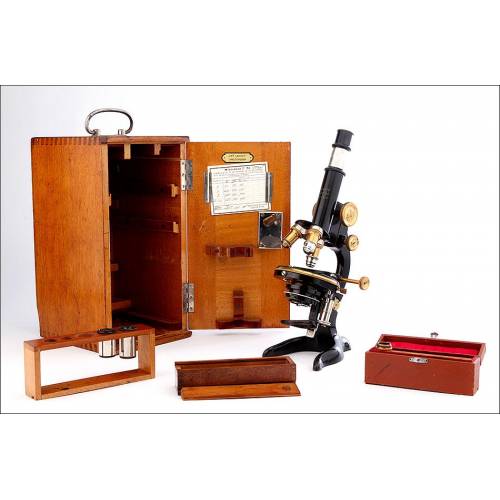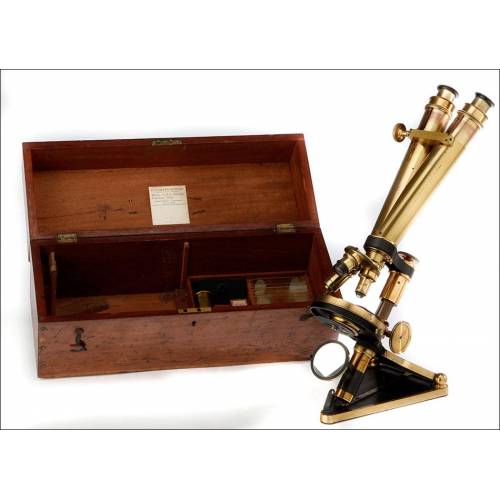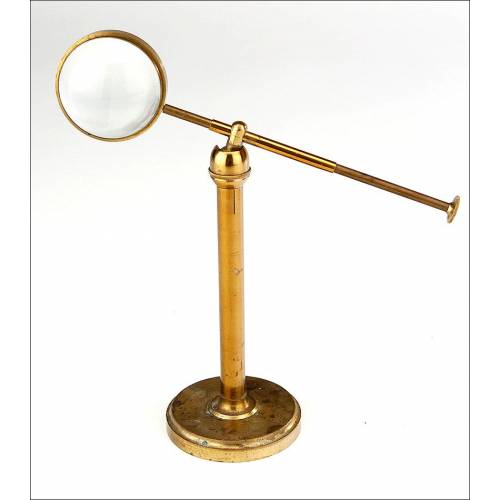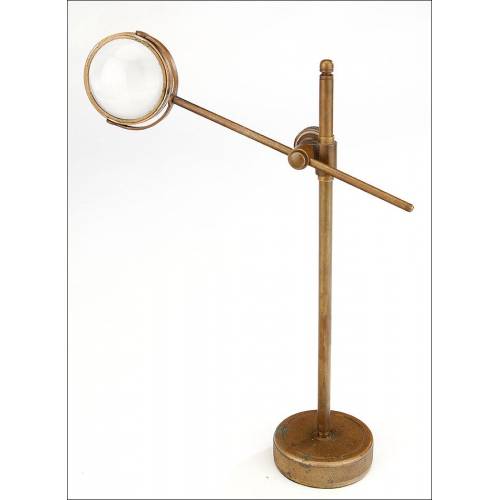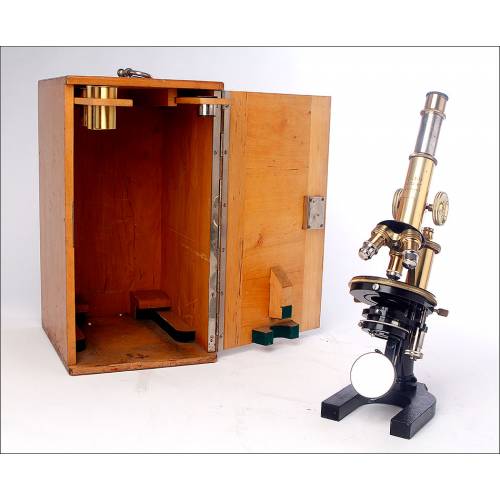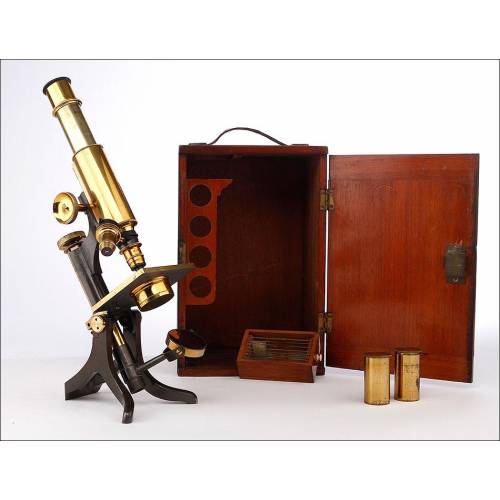C-417
E. Leitz Wetlzar antique microscope. Leitz Wetlzar. Germany, 1918
Magnificent antique Leitz Wetlzar microscope with mahogany case. Includes micrometer stage, 4 objectives and 4 eyepieces. In very good condition.
Sold!
Amazing antique E. Leitz Wetlzar microscope made in Germany in 1918. This is a wonderful scientist-research instrument for professional use that has survived to our days in excellent condition and working order. The microscope mounts a micrometrical-adjustment system designed to move the sample plates without touching them and with the required precision. It also includes a three-lens revolving nosepiece; all the lenses are original Leitz Wetzlar pieces and remain in great condition. The microscope and the accessories that come with it (a spare lens apart from the ones mounted in the nosepiece, and 4 eyepieces) are stored in a beautiful solid-mahogany wooden case, original from the time too. The microscope bears the serial number 178196 engraved in the brass turret. This number can also be seen engraved at the top edge of the cases door. The turret and the rest of the brass component parts are in very good condition and preserve the original protecting varnish that provides the metal with a lovely patina. The horseshoe-shaped iron foot bears a lovely black-enameled finish, shiny and even. All the microscopes screws and gears move softly and fluidly, being a real pleasure to operate them. On the other hand, the mahogany wooden case is also very well preserved: it keeps the original French-polish finish, and the lock and key remain in perfect working order. For its high quality, its makers prestige and the fine turn-of-the-century design it boasts, this antique Leitz Wetzlar microscope is worthy of inclusion in the best science and technology museum.Ernst Leitz Wetzlar History The beginnings of the famous optic material manufacturing company named Ernst Leitz Wetzlar can be found in the first half of the 19th century, when the mechanic and selft-taught mathematician Carl Kellner founded the Carl Kellner Optisches Institut in Wetlzar, Germany. After his early death his widow maintained the business, and in 1864 the mechanical engineer Ernst Leitz entered the company. Just five years later, Leitz took control of the firm and changed its name for Ernst Leitz Wetzlar. Leitz led the company to success after introducing improvements such as serial production, raising sales volume rapidly after 1871. Leitz microscopes included technical improvements that increased their quality; by the late 19th century the company already had a worldwide reputation. Ernst Leitz died in 1920 and the leadership of the firm passed to his son. As well as for their microscopes and optic material, Leitz became hugely famous for their famous Leica cameras (abbreviation of Leitz Camera).

